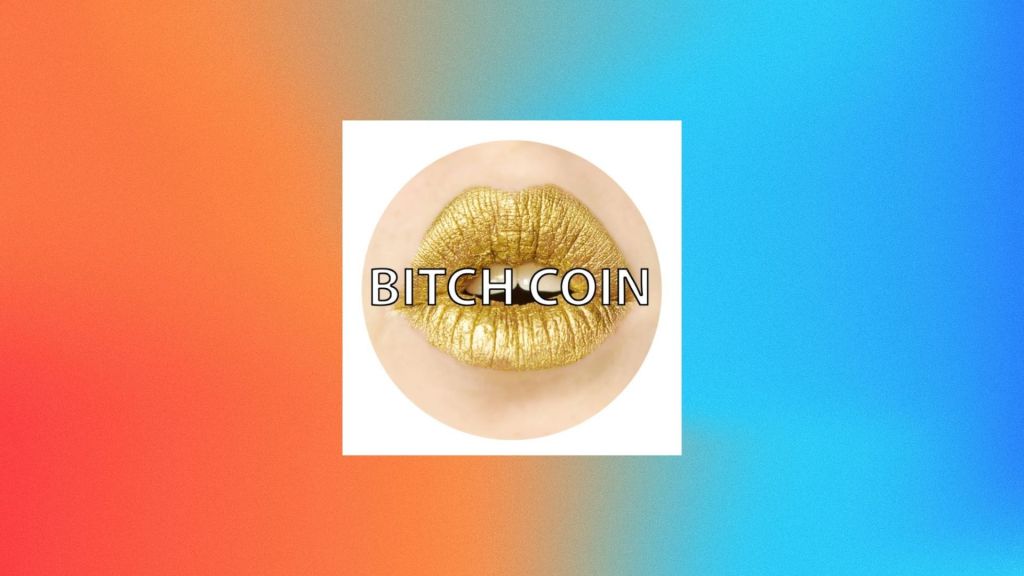Unless you were lucky enough to nap through the last year, you know that the sales market for non-fungible tokens (NFTs) has shot up faster than a common garden weed. While NFTs are still only a few years old, the idea to create art-backed collectible tokens on the blockchain isn’t new. Before the pandemic, before the Ethereum blockchain network itself even existed, there was Bitchcoin.
A little-known secret in the art world, Bitchcoin claims to be the first ever artist-minted token on a blockchain network. The token debuted way back in February 2015, only a year after the Bitcoin network first sparked to life, and was the brainchild of Sarah Meyohas, then a graduate student in Yale University’s esteemed photography MFA program. The initial run of tokens were mined in Brooklyn with the artist think tank Where, a shipping-container-turned-art-space run by writer Lucy Hunter and artist R. Lyon.
Videos by VICE
More than half a decade later, the world has caught up to Meyohas. Now, the artist has freshly minted a new batch of Bitchcoins for an online-only sale at the Phillips auction house, which is open for bidding from May 25 to 28.
In a time when memory on the Internet is practically non-existent, it’s worth comparing Bitchcoin 2015 to Bitchcoin 2021. While changes in the crypto-landscape now make the first line of Bitchcoins seem like “crypto-antiques”—as Meyohas calls them—they present a microcosm of the promises and pitfalls for those hoping to make, collect, and understand the wild world of DeFi, or decentralized finance.
The original Bitchcoin was conceptually similar to today’s NFTs, but way more analog. Buyers purchased a token for $100 that was backed by a physical photograph by Meyohas that was stored in a bank locker. However, no single person owned the work: each coin was worth five square inches of investment. 200 coins were originally released, with the early adopters gambling on the risk that the work would go up in value. And if it didn’t? Well, they were investing in Meyohas herself and whether her career would have value in the future as a “social”-type token. These collectors even got printed out certificates as an artifact.
Did she make any returns on the project? “Not a penny,” Meyhoas said. “I barely broke even.”
There are major differences between Bitchcoin then and now. For starters, there’s more tokens: 480 total Bitchcoins are being auctioned off in bundles of 80 and 160 tokens. Bidding starts at $40,000, to be purchased with ETH, as the coin has migrated to the Ethereum network. Lawyers were involved, smart contracts were negotiated, along with more rendering (each NFT is represented by an individual MP4 video file), and more fees for the Ethereum network.
One of the biggest changes? Meyohas drummed up support for the new edition of Bitchcoin with venture capital funders. One of those funders, ei ventures, lists Bitchcoin in their portfolio next to Y Combinator startups. Bitchcoin’s presale involved participation from investors who are well-versed in the crypto space, such as Tarun Chitra, Joyce Chang, Reuben Bramanathan, Eric Yoo, and the Crypto Dog. The typical art crowd? Not so much.
Unlike art collectors who may be interested in owning a physical painting, “the idea of investing in a project, as opposed to buying a physical painting to put on the wall is more in line with the habits of VC investors,” she explained. Furthermore, tech investors are used to high-risk projects, investing in startups and personalities they believe in. “They are used to taking a high risk position, and comfortable with the possibility that it may work out wonderfully, or fail miserably.” She doesn’t know who all of the buyers will be with the new edition now that it’s going up for auction at Phillips, or what they’ll do with the tokens, which would give anyone anxiety.
“Who knows if they’re going to pump it or dump it?” Meyohas said over the phone.
They might. Because this time around, instead of investing in a part of a photograph, buyers of Bitchcoin can trade their ERC-1155 token on Ethereum. They can trade their coin for a physical artwork, but only if they’re willing to let that coin be rendered useless, or “burned.” In return, they’ll receive a physical work: a petal “relic” from Meyohas’s 2017 performance and film “Cloud of Petals.” For that project, she gave an all-male team of researchers the task of creating a machine-learning dataset composed of single rose petals. As the “steward of the petals,” she holds the flowers in safekeeping, as if she were managing the assets kept in a bank.
In the still male-dominated NFT space, Meyohas’s performance capitalism is a necessary critique of the “BroBible-level brain farts” occupying the crypto auction space, as critic Ben David put it at Artnet.
Being an artist who still “makes photographs in her living room,” the original intent to tokenize her career continues to be relevant, Meyohas said. Maybe she can do more than break even this go around. She wants to utilize the investment in her physical photographic work so that she can “scale up, hire collaborators, and buy expensive diffraction gratings,” she told me.
But will the new crypto crowd “get” Bitchcoin or will it be yet another “pump and dump”? In part, it doesn’t matter. Risk is part of the appeal of investing in NFTs, but from the standpoint of an artist focused on speculation, it’s also a great social experiment: who will HODL their Bitchcoins and who will trade them in for one of the artist’s rose petals?
With the current debate around the environmental stakes of cryptocurrency mining, the question of who wants a piece of the digital world more than a piece of the natural world is a battle that will soon be played out in Bitchcoin.





